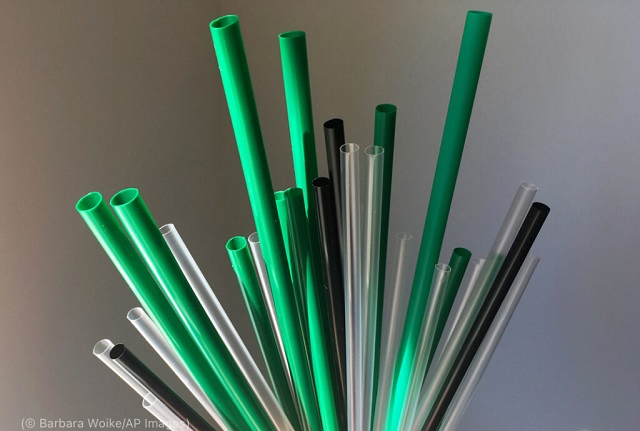Plastic pollution affects every place on the planet, from the belly of an animal in remote Antarctica to the trees of the Sahel to the highest mountains in the Himalayas. It can take centuries to degrade.
The world produces about 272 million metric tons of plastic waste each year. That’s close to the weight of the entire human population. And a little over 7 million metric tons of that waste makes its way into the ocean annually.
In the United States, the public and private sectors are working to reduce plastic pollution globally.
U.S. government leads the global fight
The U.S. Department of State worked with partners at the United Nations to launch negotiations for a global agreement on plastic pollution at the U.N. Environment Assembly.
“Plastic pollution is a global problem that affects the environment, food security, maritime transportation, tourism, economic stability, resource management, and potentially human health,” said Monica Medina, assistant secretary of the State Department’s Bureau of Oceans and International Environmental and Scientific Affairs.
Plastic pollution that enters the ocean is indifferent to political boundaries. This week at the @UN Environment Assembly 5.2, the United States is working with our counterparts to find innovative solutions to this global problem. #UNEA pic.twitter.com/YNEgP40nPw
— Department of State (@StateDept) February 28, 2022
“Plastic pollution, in particular ocean plastic pollution, does not respect political boundaries and addressing it requires international cooperation.”
The State Department and the Environmental Protection Agency are helping Central American countries and the Dominican Republic “strengthen solid waste management capacity, including addressing land-based sources of ocean plastic pollution.” The agency has also awarded millions in grant funding to nongovernmental organizations to combat plastic ocean debris.
Private sector gets to work
The U.S. Plastics Pact was established in August 2020 as part of the Ellen MacArthur Foundation’s worldwide Plastics Pact network. The goal is to create a path toward a circular economy for plastics, meaning reused plastics would replace new plastics.
The participating U.S. private sector companies in the pact represent one-third of the U.S. supply of plastic packaging.

New York City moved to ban the use of plastic straws and stirrers in bars, restaurants and coffee shops in 2018. (© Barbara Woike/AP Images)
Last June, the Plastics Pact outlined four goals to reduce plastic pollution by 2025:
- Define a list of packaging that is problematic or unnecessary by 2021 and take measures to eliminate the items on the list by 2025.
- Ensure 100% of plastic packaging will be reusable, recyclable or compostable by 2025.
- Undertake ambitious actions to effectively recycle or compost 50% of plastic packaging by 2025.
- Achieve an average of 30% recycled content or responsibly sourced, biobased content by 2025.
In January, the Plastics Pact released a list of problematic plastics — such as straws, cutlery and stirrers in addition to chemicals like PVC, PFAS and PETG — that are not reusable, recyclable or compostable. U.S. Plastics Pact members will develop guidance by 2025 on alternatives to these items.
“The results from the U.S. Plastics Pact’s efforts to advance packaging, improve recycling, and reduce plastic waste will benefit the entire system and all materials,” said Sarah Dearman, the vice president of Circular Ventures for The Recycling Partnership.
Banner image: Children play on a pile of discarded sheets of plastic left over from the manufacture of flip-flops in Nairobi, Kenya, in 2015. (© Ben Curtis/AP Images)







COMMENTS0
LEAVE A COMMENT
TOP